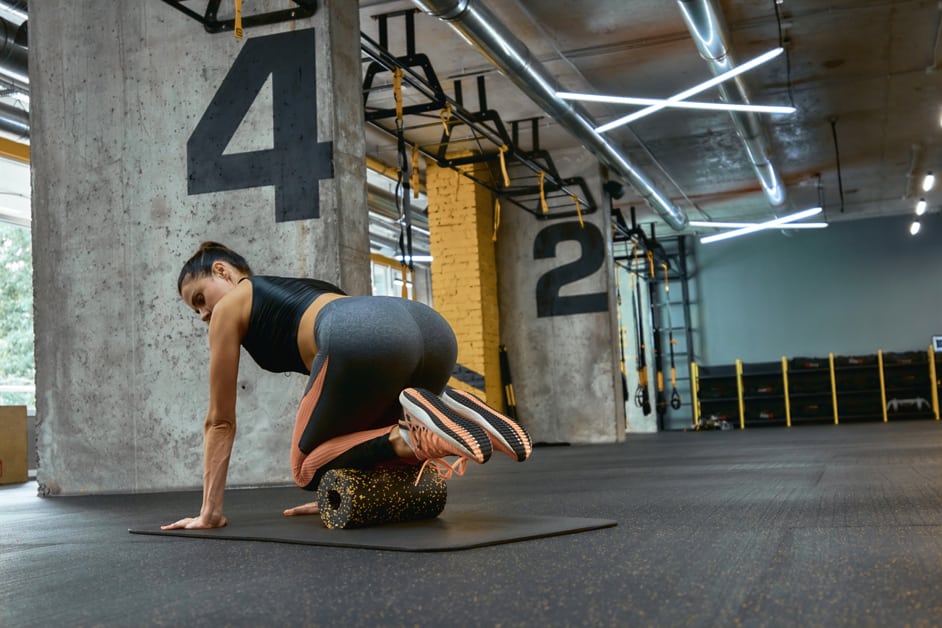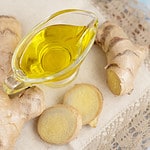Introduction
Foam rolling is on the rise! It’s a great way to improve your physical health and performance. By moving over muscles, you break up “knots” and reduce strain on joints. Plus, it releases tension in the core, which can help ease pain and increase strength. Foam rolling also reduces stress on your knees and helps you feel better during and after exercise. On top of that, it boosts flexibility. If you have any knee weaknesses or imbalances that can limit performance or up your risk for injury, foam rolling is an ideal addition to your conditioning program.
Here are some tips to get you started:
Benefits of Foam Rolling
Foam rolling is a current trend in self-massage. It can assist in increasing your mobility and give your muscles and ligaments some love. Plus, when used with regular exercise, foam rolling brings lots of benefits to your knee health.
Let’s look at the advantages:
Improved flexibility
Foam rolling can help your joints become more flexible and move better. This is especially good for your knees, as it can reduce pain and keep them healthy. When you do this with warm up exercises like dynamic stretching, your performance during exercise will improve.
When foam rolling, use light pressure on each muscle group. Look for tight spots and stay there for about 30 seconds until you feel a release. If it’s too painful, try rolling at an angle next to the muscle fibers. Take it slow and don’t rush. Once you’re done, stretch any muscles that are still tight.
Reduced muscle tension
Foam rolling is a must for any exercise or healthy lifestyle. It can be especially helpful for knee-related injuries. It provides muscular relief and mobility. Benefits include: reduced muscle tension, better circulation, increased flexibility, and lower risk of injury.
Using a foam roller helps reduce body tension. Put the roller under a muscle. Move your body off it slowly. This massages the muscles and loosens fibers. This improves blood flow and flexibility. It reduces stiffness and pain. It also boosts mobility.
Targeted foam rollers stimulate certain body points. They also help with alignment during exercise activities. They target areas that need attention. It helps increase motion control for activities or sports that need agility and range of motion.
Foam rolling regularly reduces the chance of future knee injuries. It loosens tight spots or knots around knee joints.
Enhanced circulation
Foam rolling is a great way to boost circulation. This is useful for many reasons. It helps muscles relax and reduces soreness and stiffness. Circulation can reduce inflammation in the knee, which is good for those healing from injury or pain.
An extra flow of blood brings more oxygen and nutrients to cells. This helps them work better and makes it easier to heal. It also flushes out lactic acid in muscles, which is essential for athletes to recover quickly after exertion.
Improved joint range of motion
Foam rolling is a type of self-myofascial release. It is a massage that focuses on releasing restrictions and tightness in the body’s soft tissues. The aim is to help improve joint range of motion and move without pain.
Foam rolling can relax muscles, increase circulation and reduce inflammation, which can help keep knee pain in check. When foam rolling for knee health, focus on particular spots around the knees such as the quadriceps, glutes and hamstrings. Start by rolling back and forth over each muscle with medium pressure until tension/tightness dissipates. When you find tight or extra attention-needing spots, pause and apply pressure until they soften. Pay attention to your body while foam rolling. Breathe deeply and stop if it becomes too uncomfortable or painful.
Foam rolling has many benefits. It improves muscular balance, posture and reduces risk for injuries. Doing it regularly with stretching exercises or dynamic warm-ups can also help enhance performance and energy levels. Incorporating foam rolling in your routine can be beneficial for other joints too – just don’t push yourself too hard!
Types of Foam Rollers
Foam rolling is a must for knee health. Various types of foam rollers exist. So, let’s explore them and pick the one that suits you!
There are many on the market and each has unique advantages. Choose yours today!
High-density foam rollers
High-density foam rollers are firm and deliver intense pressure when you roll on them. These rollers can be used for massaging, releasing lactic acid, breaking up adhesions and boosting blood circulation. They help painful sore spots in muscles due to tightness or scar tissue. The pressure from the foam roller helps break these areas of tension. It also stimulates the nucleus proprioceptors in muscle cells and helps increase joint range of motion. This is important for knee health when doing exercises.
High-density foam rollers come in a range of sizes (13 inches to 36 inches long and 5-6 inches in diameter). They have textured surfaces to give an extended massage effect. Some of them have a soft cotton cover for extra comfort while rolling. High-density foam rollers are usually solid and not striped like traditional foam rollers.
Textured foam rollers
Textured foam rollers provide extra support for targeting muscles and improving blood flow. They have bumps and padded textures, which let users dig deeper into their muscles to release tension and extend motion. They are also myofascial release tools, breaking down scar tissues.
Textured foam rollers are great for small, hard-to-reach muscle groups. These include hamstrings and neck extensors. Some have dividers, so users may choose the pressure level. When using for knee health, it’s important to follow directions and start at low intensity before progressing.
Vibrating foam rollers
Vibrating foam rollers offer the same perks as regular foam rollers. Plus, the vibration adds an extra intensity to your movements. It can help ease even the most stubborn knots and muscular tension.
Vibrating foam rollers come in various designs and vibration modes. Many come with multiple intensities. This allows you to adjust the depth of the vibrations for enhanced benefit. It’s a great pick for athletes aiming to boost their flexibility and soothe muscle pain after rigorous workouts.
Foam Rolling Techniques
Foam rolling is an awesome way to decrease knee agony and tenderness. Plus, it can help with flexibility and movement. Foam Rolling tactics can help release tension in muscles and pressure points, which leads to greater range of motion and improved circulation.
In this article, we’ll look at the various Foam Rolling techniques that can be used to enhance knee health:
Upper body
Foam rolling the upper body is great for neck & shoulder pain. Start by positioning the foam roller horizontally along your spine. Move up & down your spine, from head to tailbone. Use a smaller hand-held roller, such as The Grid Mini Foam Roller, to target muscle knots or trigger points.
Focus on your shoulders, chest & arms by placing the mini roller at angles while rolling. Apply pressure with both forearms onto knots, parallel to muscle fibers. This will help relieve tension in those areas too.
Lower body
Foam rolling is great for the lower body. It can boost flexibility, reduce pain and increase range of motion. It can also help with knee pain due to overuse injuries. Plus, it decreases risk of injury and helps with recovery after a tough workout or competition.
The technique involves using your body weight and a foam roller. Get a size that works for you. When self-massaging, use slow, steady motions over each muscle group for 20-30 seconds before moving on.
Foam rolling can help with calf/gastrocnemius/soleus muscles, quadriceps/hamstrings muscles, glutes/hip flexors and IT band. Slow movements are more effective than quick ones. This activates muscle tissue and reduces tightness in the areas, which helps with knee pain from overuse injuries.
Safety Tips
Foam rolling is awesome for knee health! It can reduce tightness and pain in the muscles around the knee. But, it’s essential to be careful to stop any accidents. Here are some safety tips for foam rolling: keep them in mind when adding it to your workouts!
- Always foam roll on a clean and dry surface.
- Start slowly and work your way up to deeper pressure.
- Avoid rolling directly over bones or joints.
- Don’t foam roll for longer than two minutes on any one spot.
- Stop if you feel any pain or discomfort.
Start slowly
Safety and good practices are essential when incorporating foam rolling into your routine. Start slowly to avoid overstretching and injury. Movements should be slow and steady, not fast and aggressive. To keep control, focus on deep breathing. If the pressure is too intense, move the roller up or down to find a more comfortable spot. Foam rolling isn’t meant to be painful – it’s a way to relieve muscle tension.
Don’t roll over joints
When using a foam roller, do not roll over any joints (e.g. knee, shoulder). This can cause harm. Instead, roll around the muscle tissue nearby. This will still help with circulation and performance.
If the knee is too tender, don’t do the routine. Or, see a doctor before attempting it.
Don’t overdo it
Foam rolling is key, but don’t overdo it! Start off soft and easy. It shouldn’t be painful; if it is, lower the intensity or switch up the area of your bod. 4-5 minutes should do it, if you’re focusing on areas like calves, hamstrings, quads, and hip flexors.
Stretching before and after foam rolling is also important. Foam rolling can loosen tight muscles, improving flexibility and performance. Stretching is vital to any exercise routine as it maintains motion in joints and reduces injury risk. Stretch the same muscles you foam rolled, starting with 10 seconds and increasing as needed.
Incorporating a foam rolling routine into your exercise plan can help joint health. Make sure to stretch before and after so your muscles can release tension without rushing recovery.
Conclusion
You should now understand the importance of foam rolling for your knees. It can improve mobility before exercises like squats, lunges and extensions. It increases circulation and loosens tight muscles. Loaded exercises like plyometrics, single-leg leaps and hops can be done easier.
Foam rolling also helps with recovery. It reduces lactic acid and promotes myofascial release. It makes stretching more effective by clearing toxins.
Athletes need to think about foam rolling in their training plan. It may give them an edge on game day. Professionals say to add soft tissue mobilization to every program!
Frequently Asked Questions
Q1: What is foam rolling?
A1: Foam rolling is a form of self-myofascial release (SMR) or self-massage used to release tight muscles, improve mobility, and reduce pain. It is performed by rolling over a foam roller or other device with your bodyweight.
Q2: How often should I foam roll?
A2: Foam rolling should be done at least once per day and can be done up to three times per day. It is best to foam roll before and after any activity to increase blood flow, reduce tension, and improve mobility.
Q3: How can foam rolling help with knee health?
A3: Foam rolling can help improve knee health by reducing tension in the surrounding muscles and improving range of motion. It can also help reduce inflammation, improve circulation, and reduce pain.





